Key takeaways
- Project Based Learning (PBL) fosters active engagement by connecting students with real-world projects, enhancing their curiosity and sense of purpose in learning.
- Resources for activist teachers empower educators to blend content knowledge with critical awareness, facilitating discussions on social issues effectively.
- PBL promotes essential skills such as problem-solving, collaboration, and emotional safety, preparing students for meaningful interactions beyond the classroom.
- Key strategies for implementing PBL include starting small, fostering a safe classroom culture, and encouraging consistent reflection to maintain motivation and clarity.
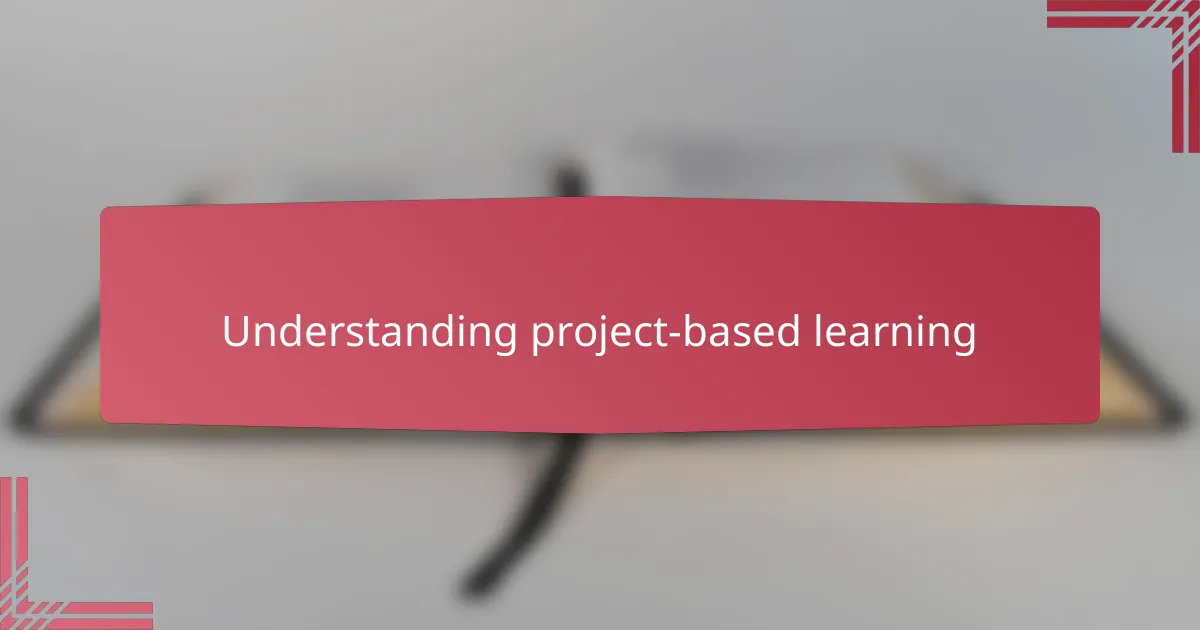
Understanding Project Based Learning
Project Based Learning (PBL) turned my classroom from a place of passive listening into a hub of active exploration. I found that when students work on real-world projects, their curiosity naturally sparks, and the learning feels more meaningful. Have you ever noticed how enthusiasm completely changes when students see the purpose behind their work?
To me, PBL isn’t just another teaching strategy; it’s a mindset shift. It challenges both teachers and students to step beyond textbooks and quizzes, encouraging collaboration, critical thinking, and creativity. I remember feeling hesitant at first—how do you manage all those moving parts? But the payoff, watching students connect ideas and take ownership, was worth every challenge.
What stands out most about PBL is its ability to make learning relevant and personal. When students tackle projects that reflect their interests or community issues, education goes beyond the classroom—it becomes a tool for change. That’s the kind of engagement I strive for every day in my role as an activist teacher.
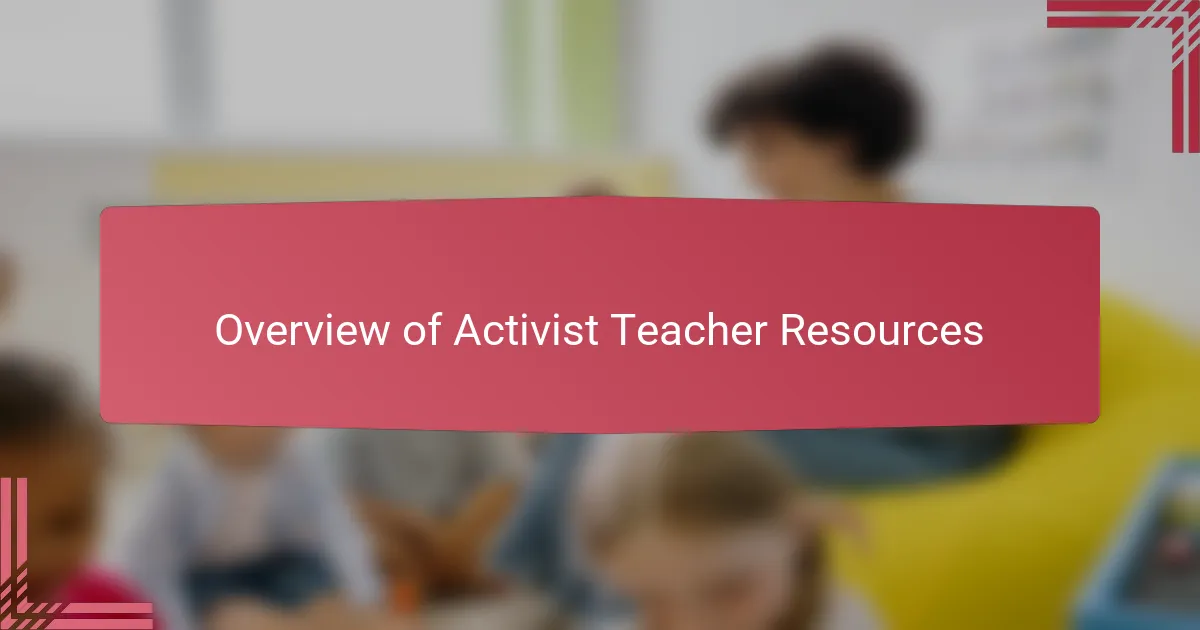
Overview of Activist Teacher Resources
Activist teacher resources are more than just lesson plans or activity guides; they’re a toolkit designed to empower educators who want to ignite change through their teaching. From my experience, these resources offer a way to connect curriculum with real-world issues, helping students see themselves as participants in larger social conversations. Have you ever felt limited by traditional materials that don’t address what truly matters to your students? That’s exactly where activist resources step in.
What I appreciate most is how these materials encourage educators to blend content knowledge with critical awareness. They include strategies for facilitating discussions on equity, justice, and community engagement without feeling like you’re walking on eggshells. I recall the first time I used resources focused on social justice—it was refreshing to see students not just absorb information but also challenge assumptions and share their perspectives openly.
These resources also provide ongoing support, from curated readings to project ideas that align with activist goals. They helped me feel less isolated in my efforts to make teaching a force for positive social change. It made me wonder: what if every teacher had access to tools that not only inform but also inspire action? The difference it could make in classrooms and communities is profound.
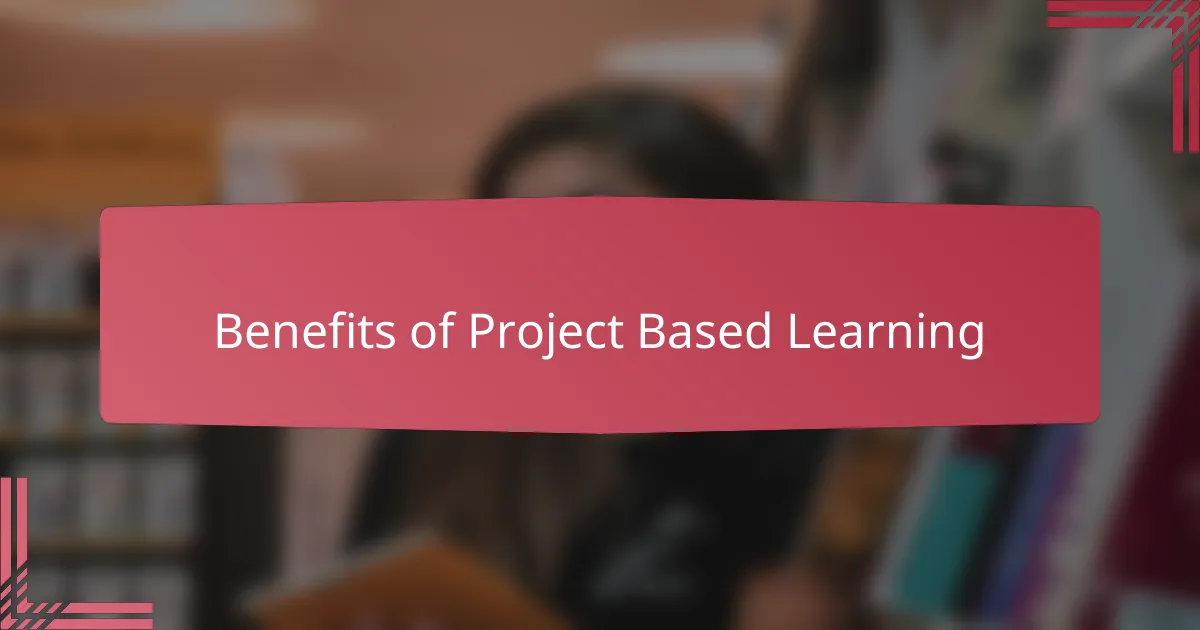
Benefits of Project Based Learning
One of the biggest benefits I’ve witnessed with Project Based Learning is how it transforms students into genuine problem-solvers. Instead of memorizing facts, they wrestle with challenges that demand creativity and perseverance. Have you noticed how this kind of real engagement builds confidence and a sense of accomplishment? Watching a student’s face light up when they crack a tough problem is one of those moments that reminds me why PBL matters.
Beyond skills, PBL cultivates collaboration in ways traditional lessons often miss. When students work together on projects, they learn to listen, negotiate, and share responsibility. It’s rewarding to see a group that once struggled to communicate find common ground and produce something meaningful. I often think about how these social skills will matter long after they leave my classroom—a reminder that learning isn’t just about content, but about connection too.
Finally, PBL makes learning feel relevant and alive. When students see their work linked to real community issues or their own interests, it sparks motivation that no worksheet can match. I remember a project where my students created action plans to address local environmental concerns—it was inspiring how they took ownership and felt empowered to make a difference. Doesn’t teaching become infinitely more rewarding when students grasp that their efforts can truly impact the world around them?
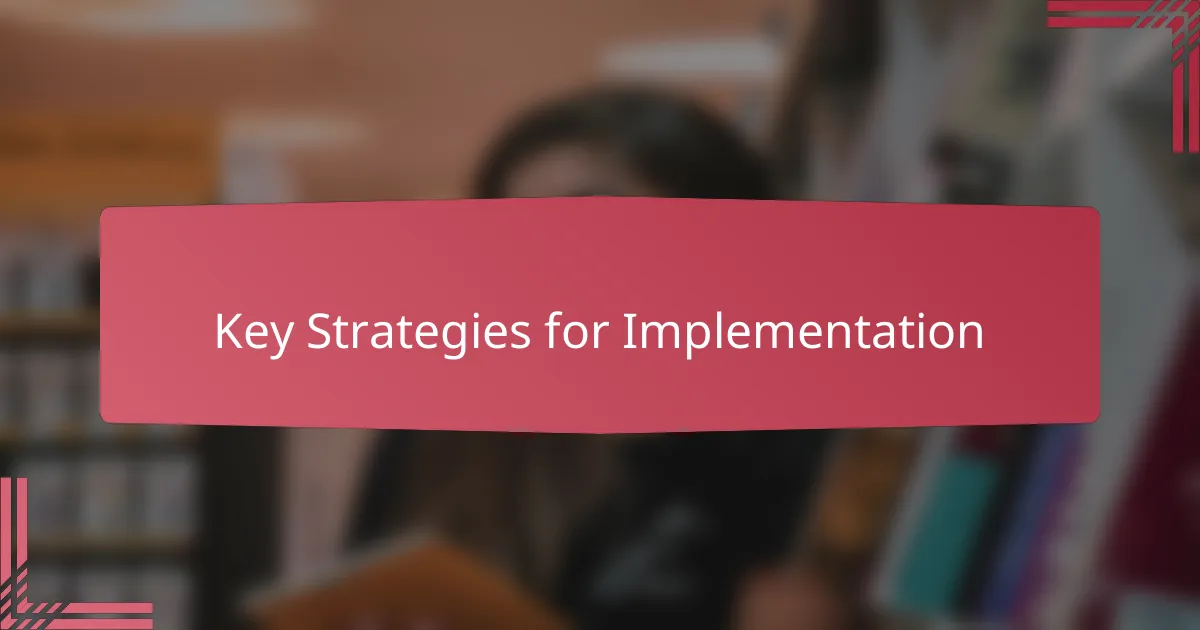
Key Strategies for Implementation
One of the key strategies I found essential was starting small—choosing a manageable project that connects deeply with my students’ lives. It felt less overwhelming and allowed me to refine my approach before scaling up. Have you ever tried diving into a huge project only to feel swamped? That experience taught me the value of pacing myself and celebrating small wins.
Equally important is building a classroom culture that values curiosity and risk-taking. I set clear norms where mistakes were seen as growth opportunities rather than failures. This mindset shift was crucial because students began to engage more freely, sharing ideas without fear. How often do we forget that emotional safety is the foundation for meaningful learning?
Finally, integrating consistent reflection helped both my students and me stay on track. We took moments to discuss what was working, what wasn’t, and how our projects connected to bigger social issues. I found these conversations deepened understanding and kept motivation alive. Isn’t it powerful when learners see not just the “how” but the “why” behind their work?
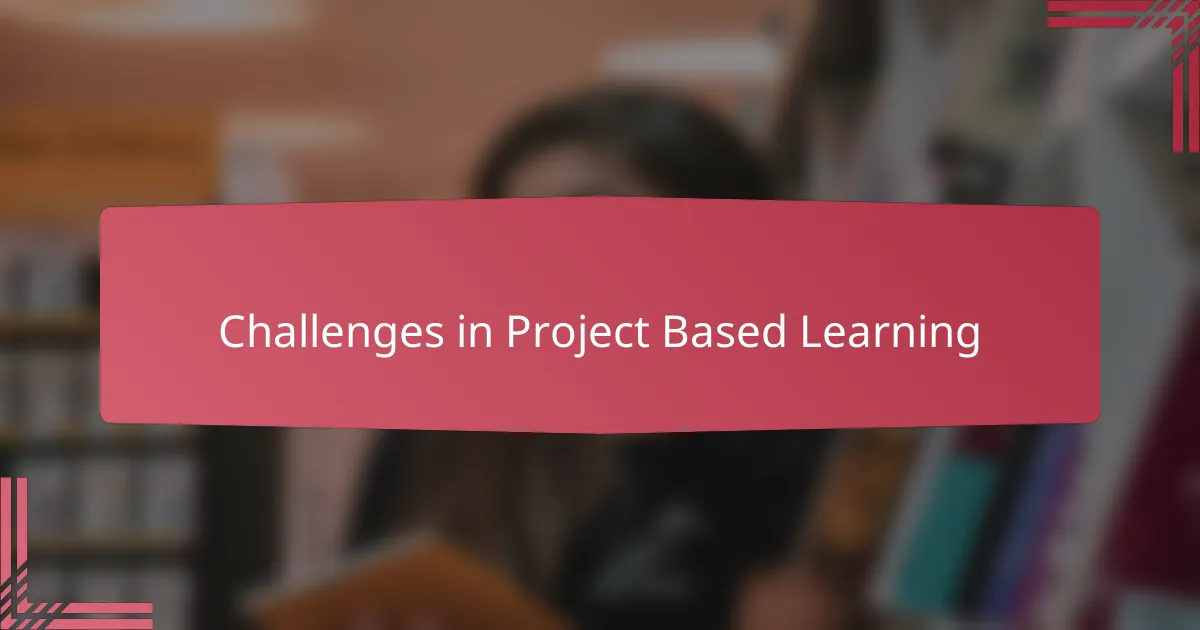
Challenges in Project Based Learning
The challenge that immediately comes to mind with Project Based Learning is managing the sheer complexity. I remember feeling a bit overwhelmed as I juggled timelines, materials, and group dynamics all at once. Have you ever started a project only to realize that coordinating all the moving parts takes more time and energy than you expected? It’s a reality that every PBL teacher has to face.
Another hurdle is ensuring every student stays engaged and contributes meaningfully. I’ve seen projects stall when a few voices dominate and others retreat into the background. How do you create a space where all students feel empowered to participate and own their part? It takes intentional scaffolding and constant encouragement.
Finally, assessment can feel tricky. Traditional tests don’t always capture the depth of learning happening in projects, so I often struggle with designing evaluations that are both fair and reflective of students’ growth. Isn’t it frustrating when your grading methods don’t align with the rich, creative work your students produce? Balancing structure with flexibility is definitely a challenge I continue to navigate.
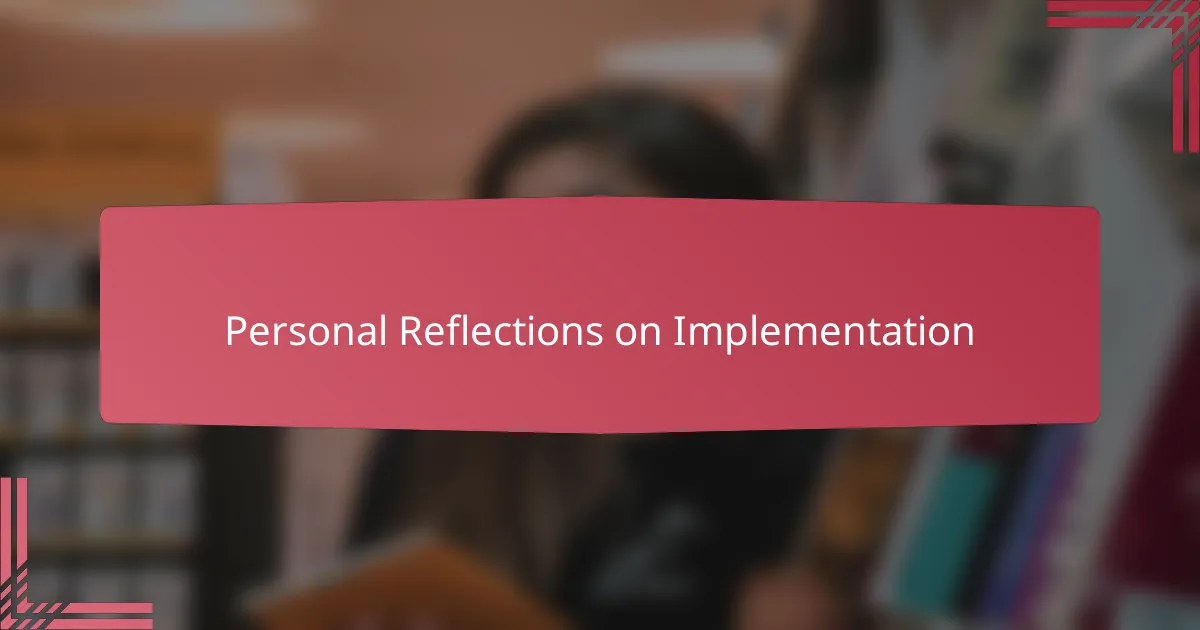
Personal Reflections on Implementation
Implementing Project Based Learning has been a journey full of surprises for me. At first, I underestimated how much preparation goes into juggling projects, student needs, and time constraints—but those moments of chaos often led to the most meaningful breakthroughs. Have you ever felt both exhausted and exhilarated after a hectic project day? That mix of emotions showed me just how deeply invested I became in students’ discoveries.
I also found that adapting my role from the “sage on the stage” to more of a guide on the side required a mindset shift. It wasn’t always easy to step back and trust students to steer their own learning, especially when progress was uneven or messy. But witnessing their growing confidence and ownership reminded me why patience and flexibility are essential in PBL.
One thing that constantly runs through my mind is how to sustain momentum without burning out—both for my students and myself. Creating space for reflection became a lifeline, helping us celebrate small wins and recalibrate when projects hit roadblocks. Doesn’t it make all the difference when learning becomes a shared journey rather than a race to the finish line?